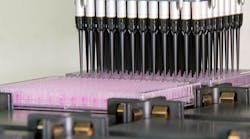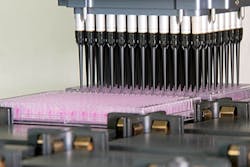The CAS Registry, Columbus, Ohio, a chemical substance information source run by the American Chemical Society, lists over 159 million unique organic and inorganic chemical substances. This number has grown from just under 21 million at the start of 2003.
While a plethora of tests exist for individual analysis of chemicals, investigating how they interact with each other and the environment poses a sterner challenge.
However, a study led by researchers at the Helmholtz Centre for Environmental Research (UFZ), Leipzig, Germany, suggests that a combination of chemical analysis and bioassays is the best way forward.
The study, described in a recent issue of Science, includes research from universities in Germany, Luxembourg and the United States.
[pullquote]
Led by UFZ environmental toxicologist professor Beate Escher, the researchers note that despite legislation, existing risk assessment and monitoring technologies have failed when it comes to chemical cocktails.
One of the main factors for this, they say, is the current approach to evaluating potential hazards from chemicals being based on a relatively small number of individual components.
While there is increased awareness that humans and the environment are exposed to a cocktail of tens of thousands of chemicals, to date, only a fraction of those chemicals have been identified. “Hence their effect on biological systems and the role of individual chemicals and degradation products in the cocktail remain largely unclear,” note the researchers.
The CAS Registry’s massive size now makes it difficult to detect cause-effect relationships and necessitates new theoretical models and methodological approaches, the authors add — while emphasizing that analytical methods are not in themselves enough.
Success of any analytical procedures depends also on what samples are taken and how they are processed. Once the same approaches are applied to different samples — whether from water, soil, blood or tissue, for example — the results can be compared. Silicone wristbands and wet wipes, among others, are particularly suited to capturing an individual’s exposure to pollutants.
Figure 1. The CITEPro technology platform allows researchers at the UFZ to perform an efficient (bio)analysis and evaluation of environmental chemicals. Source: UFZ/Bodo Tiedemann.
High-resolution mass spectroscopy (HR-MS) has been singled out as an important technological development because it can detect tens of thousands of signals in biological and environmental samples.
“It also forms the basis for “suspect screening” to identify unknown chemicals in complex mixtures. This enables us, among other things, to detect new problematic pollutants in the environment,” says Escher. “But it will never be able to capture every single substance. Even substances present below the instrumental detection limit or below the effect threshold may contribute to risk.”
So, the researchers recommend supplementing chemical analysis procedures with bioanalytical tools designed to capture mixture effects to evaluate the toxicity of wastewater effluent and sediments.
They focus on the benefits of advanced in vitro bioassays which do away with the need for slower and more difficult in vivo bioassays while at the same time being amenable to high-throughput robotics.
“The application of high-throughput in vitro assays for environmental risk assessment of mixtures and complex environmental samples is only emerging but has great potential,” says Escher.
She believes this combination of HR-MS and bioanalytical tools could revolutionize environmental monitoring. This is one of the driving forces behind UFZ’s environment profiler (CITEPro) technology platform that uses high-throughput analytical and bioanalytical procedures to prepare and test samples. However, UFZ describes CITEPro as more than hardware: it is a concept designed to characterize the exposome — in other words, capture the entirety of all environmental influences encountered over an individual’s lifetime. This includes external factors such as chemicals in the air, water or foodstuffs, and internal chemicals produced by an organism in response to various stressors.
CITEPro’s development is ongoing. “We are working on many aspects, including standardization, data sharing, and diverse monitoring/biomonitoring applications. One specialty of our lab is experimental exposure assessment in cell-based bioassays,” notes Escher.
This is important because while in vitro cell-based assays are a promising alternative to animal tests, linking the in vitro effects to adverse outcomes in vivo still remains challenging. However, quantitative in vitro–in vivo extrapolation (QIVIVE) can establish this missing link. Researchers at the UFZ and the Environmental Toxicology department at the University of Tübingen, Tübingen, Germany, already are using CITEPro in an effort to refine this technique.



